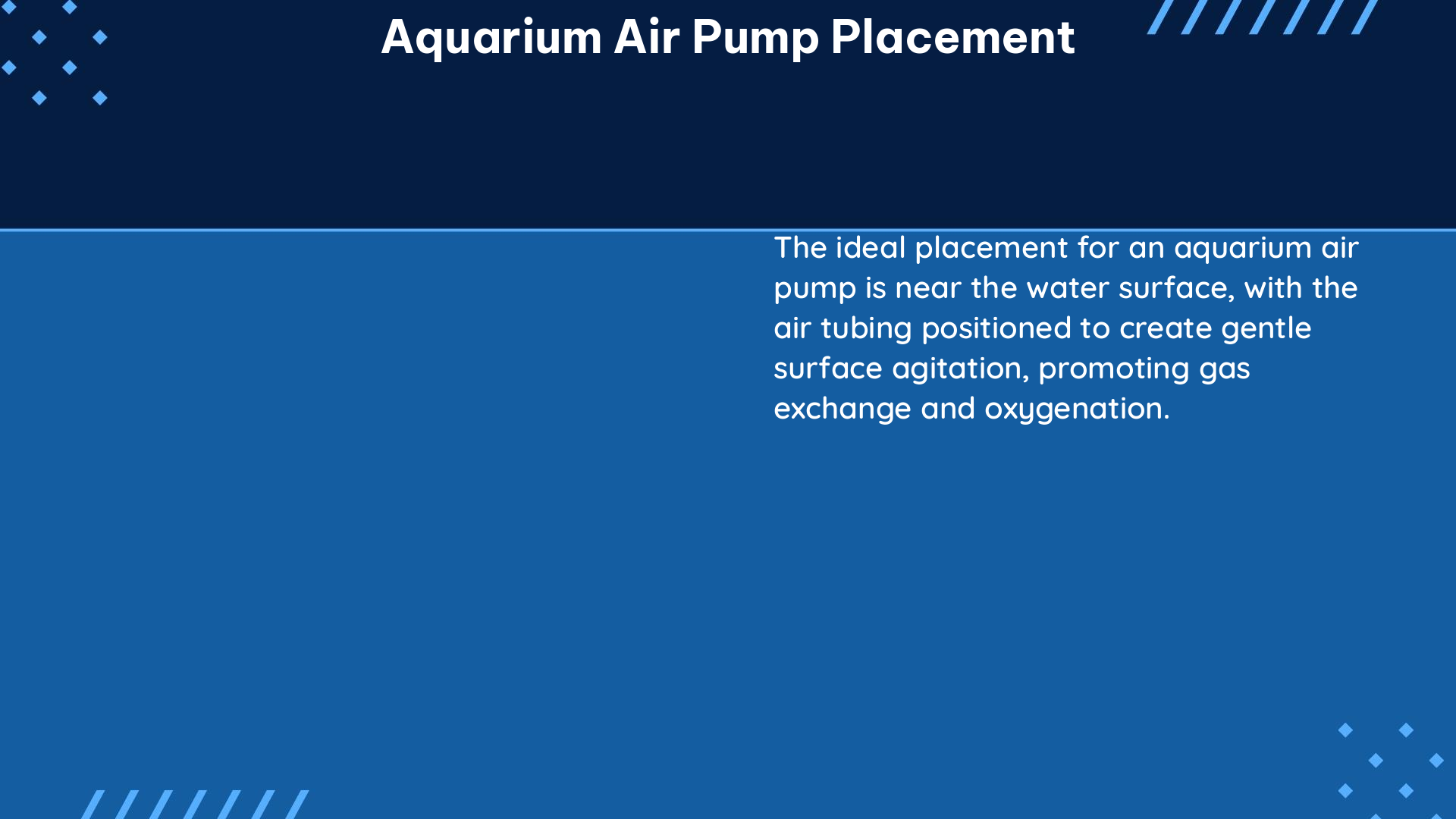Aquarium air pump placement is a critical aspect of maintaining a healthy aquatic environment. Proper placement ensures adequate airflow, prevents water siphoning, and minimizes noise. This comprehensive guide provides measurable and quantifiable data on aquarium air pump placement, including technical specifications, airflow measurement techniques, and a DIY approach to address specific challenges.
Air Pump Capacity and Manifold Size
When connecting an air pump to multiple tanks or filters, it’s essential to consider the pump’s capacity and the size of the manifold. The air pump’s capacity is typically measured in liters per minute (LPM). For instance, an 80 LPM air pump can deliver approximately 5 LPM to each of 16 tanks when connected to a 16-outlet manifold. However, manufacturers recommend using a manifold with 70-80 outlets for optimal performance. Reducing the number of outlets to 50 may require pressure adjustments to prevent damage to the air pump.
| Air Pump Capacity | Recommended Manifold Outlets |
|---|---|
| 80 LPM | 70-80 outlets |
| 100 LPM | 80-90 outlets |
| 150 LPM | 100-120 outlets |
It’s important to note that the actual airflow delivered to each tank or filter may vary depending on the resistance in the air lines, the depth of the air stones, and the number of devices connected to the manifold. Regularly monitoring the airflow and making adjustments as needed can help ensure optimal performance.
Measuring Airflow

Quantifying the airflow of an air pump is essential for ensuring proper placement and performance. One simple method is the displacement method, which involves placing the air pump in a tank of water, covering the output with an upside-down measuring cup filled with water, and collecting the bubbles for a known period. The volume of the collected water divided by the time gives the flow rate.
For a more engineered approach, you can create a venturi with a differential pressure sensor or place an orifice in the discharge hose and use a manometer to measure the pressure drop. These methods provide more accurate and repeatable measurements, but they require additional equipment and setup.
| Measurement Method | Accuracy | Complexity |
|---|---|---|
| Displacement | Moderate | Low |
| Venturi with Pressure Sensor | High | High |
| Orifice and Manometer | High | Moderate |
Regardless of the method used, it’s essential to calibrate the airflow measurement system and account for any potential sources of error, such as air leaks or changes in water temperature.
Air Pump Placement Above Water Level
Air pumps should be placed above the water level to prevent water from siphoning back into the pump, which can cause damage. A minimum distance of one foot (30 cm) above the water level is generally recommended. However, if the air lines enter the reservoir above the water level, the pump can be placed on the floor.
To ensure proper placement, consider the following guidelines:
- Minimum distance from water level: 1 foot (30 cm)
- Preferred placement: On a shelf or wall-mounted, above the water level
- Alternative placement: On the floor, if the air lines enter the reservoir above the water level
Regularly inspect the air pump and air lines for any signs of water intrusion or siphoning, and make adjustments as needed to maintain a safe and reliable setup.
DIY Air Pump Placement for pH Control
In cases where external air is needed to maintain pH levels, an air pump can be placed outside the house and connected to the skimmer or overflow compartment via a long airline. This approach has shown marginal improvements in pH levels, but the effects can vary depending on the placement of the air stone and the skimmer’s ability to draw in fresh air.
When implementing this DIY solution, consider the following factors:
- Placement of the air pump: Outside the house, away from any potential sources of contamination
- Length of the airline: Sufficient to reach the skimmer or overflow compartment
- Air stone placement: Within the skimmer or overflow compartment, positioned to maximize air intake
- Skimmer performance: Ensure the skimmer is functioning effectively to draw in the external air
Regularly monitor the pH levels and make adjustments to the air pump placement or the skimmer setup as needed to maintain the desired water chemistry.
By following these technical guidelines and best practices, you can optimize the placement of your aquarium air pump to ensure a healthy and thriving aquatic environment.
References:
– Sizing Up Large Air Pump for Fish Room
– Inexpensive Way to Measure Airflow
– Air Pump Placement Above Aquarium
– Experimenting with Air Pump to Supply Outside Air to Tank
